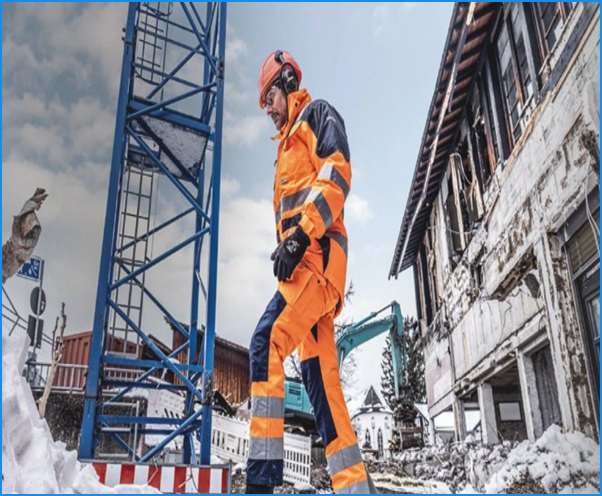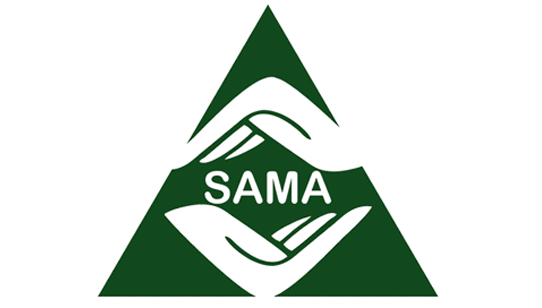How Proper Ergonomics Can Keep Your Team Safe This Winter

Highlight:
Winter workplace safety hinges on proper ergonomics, including warm-up exercises, ergonomic tools, and optimized workstations. These strategies reduce injuries, boost morale, and enhance productivity, keeping teams safe and effective throughout the season.
Winter brings a unique set of challenges to workplaces, especially in industries reliant on physical labor or outdoor tasks. The season's cold temperatures and unpredictable conditions necessitate a heightened focus on safety and efficiency. Integrating proper ergonomic practices into your workplace strategy is crucial to maintaining a safe, healthy, and productive team during these months.
Why Ergonomics Matters in Winter
The human body is particularly susceptible to the effects of cold weather. Stiff muscles, reduced flexibility, and slower reaction times are common issues brought on by frigid temperatures. These physiological changes not only affect comfort but also significantly increase the likelihood of workplace injuries, including slips, falls, and muscle strains.
Ergonomics focuses on adapting tasks, tools, and workspaces to better suit employees' needs. By emphasizing ergonomics, especially in winter, you can address the challenges posed by the season and ensure your team remains safe, comfortable, and efficient.
Key Winter Ergonomics Tips for Workplace Safety
1. Encourage Proper Warm-Up Exercises
Cold temperatures cause muscles to stiffen, reducing their range of motion and increasing injury risk. Before beginning work, employees should take a few minutes to engage in light stretching and warm-up exercises. These activities improve blood flow, reduce stiffness, and prepare the body for physical tasks.
2. Provide Ergonomically Designed Tools and Equipment
Essential winter gear like thermal wear, gloves, and anti-slip boots protect against the elements, but ergonomic tools can further enhance safety and efficiency. Invest in equipment designed to minimize awkward postures, repetitive motions, and unnecessary strain. Examples include lightweight tools with ergonomic grips or devices that reduce the effort needed for repetitive tasks.
3. Adjust Workstations
Whether indoors or outdoors, workstations must be optimized for comfort and safety. Indoor setups should ensure that desks, chairs, and computer monitors are ergonomically aligned, even during seasonal rearrangements. For outdoor workers, portable seating, adjustable tools, and equipment that reduces bending or twisting are essential.
4. Focus on Proper Lifting Techniques
Heavy winter clothing can make lifting tasks more cumbersome, increasing the risk of back injuries. Training employees in proper lifting techniques is essential. Encourage practices like bending the knees instead of the back, keeping loads close to the body, and avoiding twisting motions while carrying objects.
5. Monitor Indoor and Outdoor Conditions
Ensuring a safe environment is vital for reducing injury risks. Indoor workspaces should be adequately heated and ventilated to maintain comfort and focus. For outdoor areas, regularly check and clear pathways of snow and ice. Provide stable, non-slip work surfaces to prevent slips and falls.
Benefits of Prioritizing Ergonomics in Winter
1. Reduced Injuries
By addressing cold-related risks, you can prevent common workplace injuries such as strains, sprains, and falls. Fewer accidents translate into less downtime, improved employee health, and a safer overall work environment.
2. Enhanced Comfort
Employees who feel physically comfortable are more likely to stay focused and productive. Ergonomic solutions tailored to winter conditions promote well-being and reduce discomfort, fostering a more efficient workforce.
3. Improved Morale
Prioritizing health and safety demonstrates care and commitment to your team. Employees are more likely to feel valued and supported, which boosts morale and fosters a positive workplace culture.
4. Increased Productivity
Healthy, comfortable employees can perform their tasks more effectively. Reduced injury rates and improved focus mean that projects are completed efficiently, even in challenging winter conditions.
Make Workplace Safety a Year-Round Priority
While winter requires specific adaptations to workplace safety protocols, ergonomic practices should be a priority throughout the year. By addressing seasonal challenges and promoting health-conscious work environments, you invest in both your employees' well-being and your organization’s success.
How We Can Help
Tailoring ergonomic solutions to meet your team’s needs is essential for achieving optimal safety and productivity. Whether through workplace assessments, training programs, or customized safety plans, we’re here to support your commitment to creating a healthy, efficient, and safe work environment.
With proper ergonomics as part of your strategy, you ensure your team can tackle winter’s challenges with confidence and ease, laying the foundation for a productive and injury-free season.





.png)







